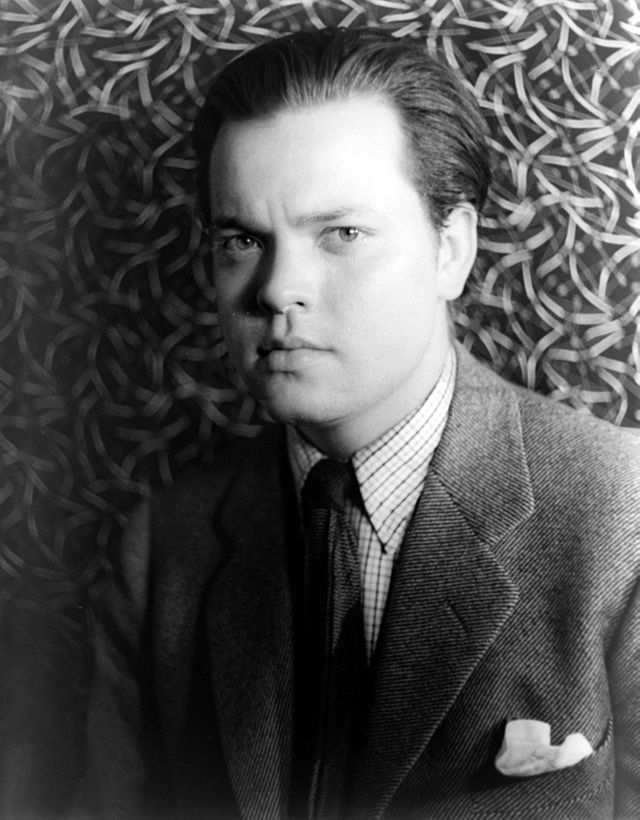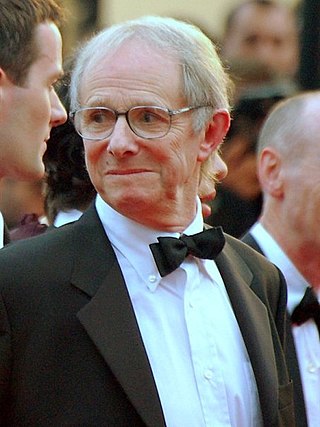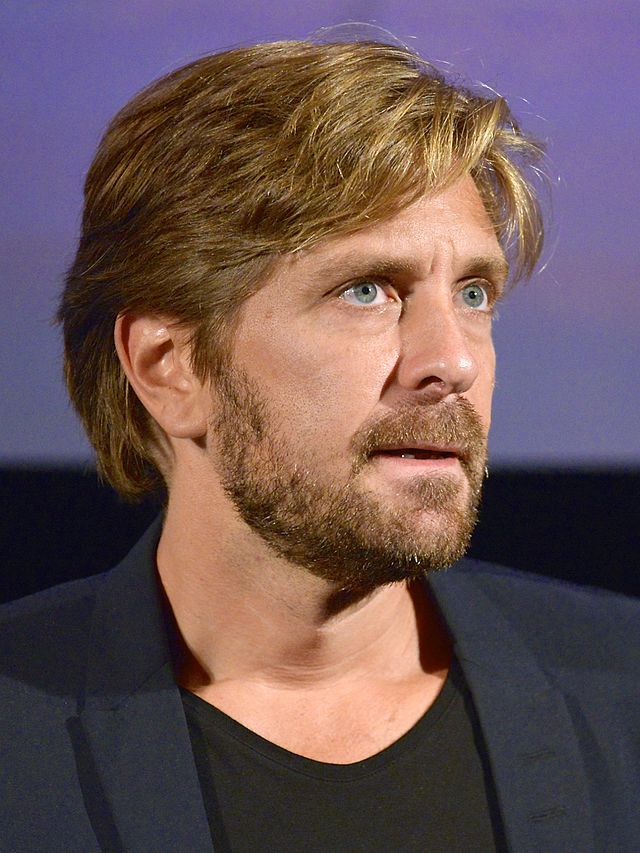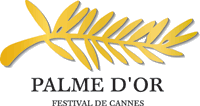Top Qs
Timeline
Chat
Perspective
Palme d'Or
Highest prize awarded at the Cannes Film Festival From Wikipedia, the free encyclopedia
Remove ads
The Palme d'Or (French pronunciation: [palm(ə) dɔʁ]; English: Golden Palm) is the highest prize awarded to the director of the Best Feature Film of the Official Competition at the Cannes Film Festival. It was introduced in 1955 by the festival's organizing committee. Previously, from 1939 to 1954, the festival's highest prize was the Grand Prix du Festival International du Film. In 1964, the Palme d'Or was replaced again by the Grand Prix, before being reintroduced in 1975.[1]
The Palme d'Or is widely considered one of the film industry's most prestigious awards.[2][3][4][5]
Remove ads
History
Summarize
Perspective

In 1954, the festival decided to present an award annually, titled the Grand Prix of the International Film Festival, with a new design each year from a contemporary artist.[1] The festival's board of directors invited several jewellers to submit designs for a palm, in tribute to the coat of arms of the city of Cannes, evoking the famous legend of Saint Honorat and the palm trees lining the famous Promenade de la Croisette.[1] The original design by Parisian jeweller Lucienne Lazon, inspired by a sketch by director Jean Cocteau, had the bevelled lower extremity of the stem forming a heart, and the pedestal a sculpture in terracotta by the artist Sébastien.[6]
In 1955, the first Palme d'Or was awarded to Delbert Mann for his film Marty.[1] From 1964 to 1974, the festival temporarily resumed a Grand Prix.[1] In 1975, the Palme d'Or was reintroduced and has since remained the festival's symbol, awarded each year to the director of the winning film, presented in a case of pure red Morocco leather lined with white suede.[1]

As of 2023, Jane Campion, Julia Ducournau, and Justine Triet are the only female directors to have won the Palme d'Or (for The Piano, Titane, and Anatomy of a Fall, respectively). However, Bodil Ipsen won the Grand Prix du Festival International du Film for The Red Meadows (along with Lau Lauritzen Jr.) as part of an 11-way tie at the inaugural 1946 festival.
Additionally, in 2013, when Blue Is the Warmest Color won the Palme d'Or, the jury headed by Steven Spielberg awarded it to the film's actresses Adèle Exarchopoulos and Léa Seydoux, as well as the director Abdellatif Kechiche.[7] This remains the only instance where multiple Palme d'Or trophies were presented.[8] The jury decided to include the actresses in the recognition due to a Cannes policy that forbids the Palme d'Or-winning film from receiving any additional awards. This policy would have prevented the jury from acknowledging the actresses separately.[9] Regarding the unorthodox decision, Spielberg commented, "Had the casting been 3% wrong, [the film] wouldn't have worked like it did for us".[10] Subsequently, Kechiche auctioned off his Palme d'Or trophy to fund his new feature film. In an interview with The Hollywood Reporter, he expressed dissatisfaction with the festival's decision to award multiple trophies, stating that he felt they had "publicly insulted" him. He added, "Liberating myself from this Palme d'Or is a way of washing my hands of this sorry affair".[8]
Since its reintroduction, the prize has been redesigned several times. At the beginning of the 1980s, the rounded shape of the pedestal, bearing the palm has gradually transformed to become pyramidal in 1984. In 1992, Thierry de Bourqueney redesigned the Palme and its pedestal in hand-cut crystal. In 1997, Caroline Scheufele redesigned the statuette; since then, it has been manufactured by the Swiss jewellery firm Chopard. The palm is made from 4.16 oz (118 g) of 18-carat yellow gold while the branch's base forms a small heart. The Palme d'or rests on a dainty crystal cushion shaped like an emerald-cut diamond.[11] A single piece of cut crystal forms a cushion for the palm, which is hand-cast into a wax mould and now presented in a case of blue Morocco leather. In 1998, Theo Angelopoulos was the first director to win the Palme d'or as it appears today, for his film Eternity and a Day.[1]
The presentation of the 2014 Palme d'Or to Winter Sleep, a Turkish film by Nuri Bilge Ceylan, occurred during the 100th anniversary year of Turkish cinema. On receiving the award, Ceylan dedicated it to the "young people" involved in Turkey's ongoing political unrest, and the workers killed in the Soma mine disaster, which occurred on the day before the commencement of the awards event.[12]
In 2017, the award was redesigned to celebrate the festival's 70th anniversary. The diamonds were provided by an ethical supplier certified by the Responsible Jewellery Council.[1]
The 2020 Cannes Film Festival was cancelled due to the ongoing COVID-19 pandemic. 56 films were announced as official selections by the festival, but no awards were presented for the first time since 1968.[13]
Remove ads
Winners
Summarize
Perspective





















1940s
1950s
1960s
1970s
1980s
1990s
2000s
2010s
2020s
- Notes
- § Denotes unanimous win
Special Palme d'Or
During the 2018 closing ceremony, the jury awarded a "Special Palme d'Or" for the first time ever. Even though the award was not intended to be an Honorary Palme d'Or to Jean-Luc Godard, the move was made as an homage to his career, and as an award to the film itself as well.[115]
Remove ads
Wins by country
- The festival was not inaugurated until after the conclusion of the war.[14] Sixty-three years later, the organizers of the 2002 festival assembled a jury of six members, including Dieter Kosslick and Alberto Barbera, to watch seven of the twelve features which had been entered into the 1939 competition, namely: Goodbye, Mr. Chips, La Loi du Nord, Lenin in 1918, The Four Feathers, The Wizard of Oz, Union Pacific, and Boefje. Union Pacific by Cecil B. DeMille was retrospectively voted the winner of the 1939 Palme d'Or.
Multiple winners
Nine directors or director duos have won the award twice. Three of them (‡) have won for consecutive films.[117][118]
Remove ads
Honorary Palme d'Or
Summarize
Perspective
In 1997, on the occasion of the 50th anniversary of the Festival, the Cannes jury awarded a "Palme des Palmes" for the first time.[119]
Since 2002 the festival began to award a non-competitive Honorary Palme d'Or to directors or actors who had achieved a notable body of work but who had never won a competitive Palme d'Or.[120]
Remove ads
See also
- List of actors who have appeared in multiple Palme d'Or winners
- Golden Bear, the highest prize awarded at the Berlin International Film Festival
- Golden Lion, the highest prize awarded at the Venice Film Festival
- Short Film Palme d'Or
References
External links
Wikiwand - on
Seamless Wikipedia browsing. On steroids.
Remove ads

